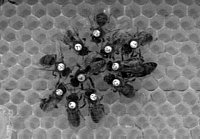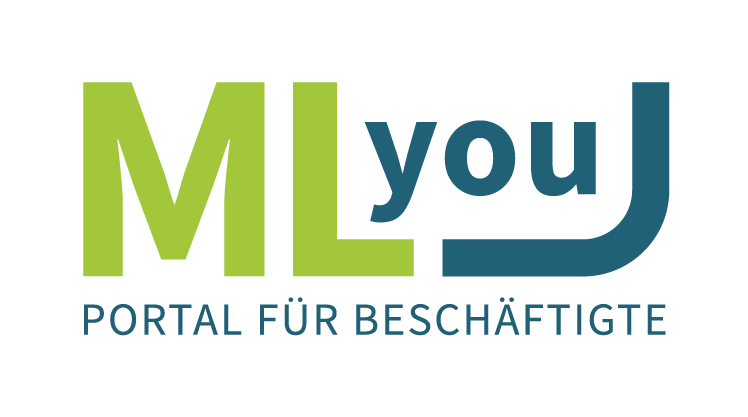Self-organization in honeybee colonies
Honeybee societies are highly co-operative structures. In every moment in life of a colony a tremendous amount of stimuli is perceived, thousands of solutions have to be found, decisions are taken and – of course – many thousands of reactions follow afterwards. But who decides, what has to be accomplished, when and in which way? Is a single bee leaving the hive by pure accident, is there any superior she is at service or does she perform this task only because she follows her instincts?

A system which is controlled by headquarters - like a computer or the human brain - needs an elaborated information system and an efficient processing unit. However, in the beehive you cannot find such kind of a superior brain or a nervous system which connects and controls all components of the system, because it is organized in a different decentralised way. But who or what is accountable for the highly structured organization in a honeybees’ hive? Though there is no controlling leader at the top of hierarchy, the system is able to tackle pretty difficult problems. It runs self-organized.
Collective intelligence of the swarm
Self-organization is a property of many complex systems that consist of a great amount of interacting subsystems. One characteristic of self-organization is a spontaneous forming of structures and patterns under specific conditions, wherefore it is suitable to start analyzing self-organizing processes by studying these so-called “pattern formations”. In the honeybees’ colony it is easy to find a multiplicity of such patterns. The organization in the hive arises from the partial systems as well, because the co-operating bees (the sub-systems) give structure to the system though they neither have knowledge of the global situation nor having a blueprint for the complete pattern in mind. Each individual works (blind for the holistic pattern) to the local rules, the global pattern results from the interaction of these single individuals. Every single bee has the ability to perceive only a little part of the entirety of influencing stimuli, but the whole of bees appears as a “collective intelligence”. That’s why many people characterize a society of honeybees as a “super-organism”. A honeybee colony operates as a parallel processing system in which decision making is performed simultaneously by largely independent working individuals. For every single bee the evolution creates a genetic program that results in behaviour which rises the inclusive fitness of the whole colony. That is the reason why the sum of all parallel decisions actually benefits the welfare of the community, too.
Task allocation and thresholds
But how does it work? What has to happen in order to avoid the situation an oversized amount of bees want to perform a single task? The work in and outside the hive has to be allocated to all members of the colony. At best this should be both flexible and efficient. A bee should be a flexible generalist for helping her sisters in case of need, but also (at least temporary) a specialist to be efficient in solving a problem. At first glance this seems to be quite difficult to be both, but an intrinsic threshold “helps” decide whether the bee should perform a task or not. Each individual has an appropriate behavioural program for every possible work in the hive as well as a fitting threshold. The difference is that each member of the colony possibly has a different and an in time changing threshold. For example if a particular bee has a high threshold for cleaning and the matching stimulus - a clean hive - is low, she will start performing another task instead of it, but if the enticement exceeds her threshold for tidying (because there is much cleaning work to do), she will work as long as the strength of the stimulus fall below. Thresholds are not fixed, they change with increasing age (e.g. a young bee has a low threshold for cleaning and a high one for flying out to collect water, an old bee vice versa), but they are also dependent on the strength of stimulus. In case of urgent need (because something is damaged inside the hive) the thresholds of all bees in the surroundings for repairing the damage descend as long as there is a sufficient amount of workers performing this “unusual” task. This way the system is able to regulate and organize itself without the necessity of a superior control centre.



